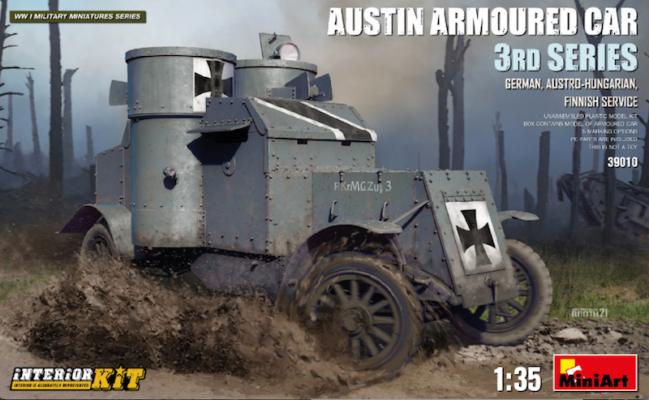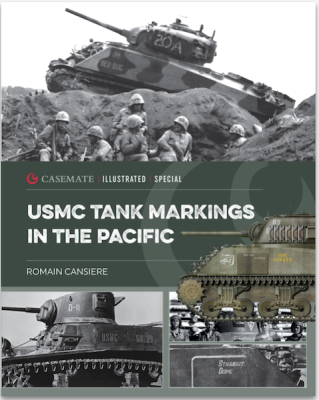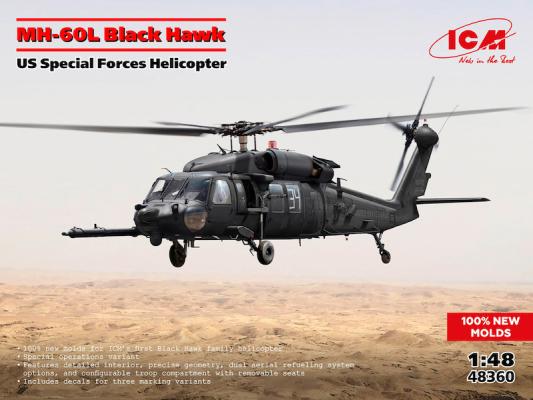Bob LaBouy
Reviews By Author

|
North American Rockwell OV-10 Bronco NOGSPublished:
Background and Historical NotesFrom The Kit Manufacturer’s Notes:
|

|
Austin Armoured Car 3rd Series: German, Austro-Hungarian, Finnish Service Interior KitPublished:
Fit and FinishThis kit’s fit overall kit is very good to excellent. The surface details are outstanding and compare favorably with what photographs and line drawings show. This model, like so many of the new releases from MiniArt, just look like the real vehicles themselves. Construction NotesThe kit is moulded in light grey plastic with only two large plastic sprue trees. There are few if any aspects of this build which posed any problems—it goes together in a basic pattern, beginning with the engine, suspension and drive assemblies. Believe me, the 26 pages of kit instructions provide you with a deal of in depth instructions broken down in multiple steps and 71 assembly panels. For the most part each of construction notes and steps are well thought out,… more |

|
USMC Tank Markings in the PacificPublished:
Publisher’s NotesThe markings on tanks of the United States Marine Corps during World War II are so varied that some have concluded they were meaningless, even anarchic. Official documents offer little insight, but a careful study of period photographs and film, cross-referenced with combat reports and veteran accounts, reveals the different systems of markings that combat units used to identify their vehicles. These markings varied between units, and from one campaign to the next, but were well-thought-out and designed to be practical and easy for tankers to interpret. In addition to tactical markings, most tankers were given names by their crews, and these were added to the tank’s markings. Personifying the tank often boosted crew morale and led to even more careful… more |

|
DShKM with Support/TripodPublished:
Introductory and Historical BackgroundICM’s Notes
|

|
"Dragon Teeth" Anti-tank ObstaclesPublished:
Concrete anti-tank obstacles, also known as ‘Dragon’s Teeth’, were first used during World War II. They are believed to have been invented in Finland as a means of defense against the armored vehicles of the Red Army. The purpose of these obstacles was not only to stop tanks and other armored vehicles but also to direct their movement into areas where they could be targeted by fire. These types of obstacles were widely used by all participants in the conflict, including neutral countries. For example, Switzerland also used similar obstacles, referring to them as Toblerone fortifications, due to their resemblance to the shape of the famous chocolate bars. ‘Dragon’s Teeth’ are still used today as engineering obstacles of a fortification type. Typically, they are made of concrete… more |

|
MH-60L Black Hawk & Black Hawk US Helicopters Paint SetPublished:
Historical & Reference NotesFrom ICM's own description:
|

|
AH-1W Super CobraPublished:
… more |

|
U-2R "Dragon Lady" Senior SpanPublished:
Historical and Reference NotesAs you delve into this project, you should really become familiar with the basic U-2 story from its origins in 1953 all the way to its usage in 2025 – that’s over 72 years. I recommend Wikipedia’s history, which I warn you, is extensive: https://en.wikipedia.org/wiki/Lockheed_U-2 US Air Force: https://www.af.mil/About-Us/Fact-Sheets/Display/Article/104560/u-2stu-2s/ Several terrific YouTube videos (each of contain U-2S a/c): |

|
The Siege of Leningrad, Then and NowPublished:
Publishers’ DescriptionFrom the publisher’s notes, you’ll quickly grasp the basic facts surrounding the siege of Leningrad:
|

|
Fw 190 A-4Published:
ReferencesI often enjoy providing several references to supplement my review notes. I initially pull out one of favorites: from the series of hard bound books, their Focke-Wulf Fw 190 by Robert Grinsell and illustrations by Rikyu Watanabe. This book among its other 1990 illustrations is a great series of cutaway drawings and a three-page drawing of Wurmheller’s Fw 190 with the color scheme and markings very close to the model and markings. I am unsure about the availability of these fine 48-page books, though I highly recommend them. Additionally, there are many internet sources of background information about the Würger, including:
|
